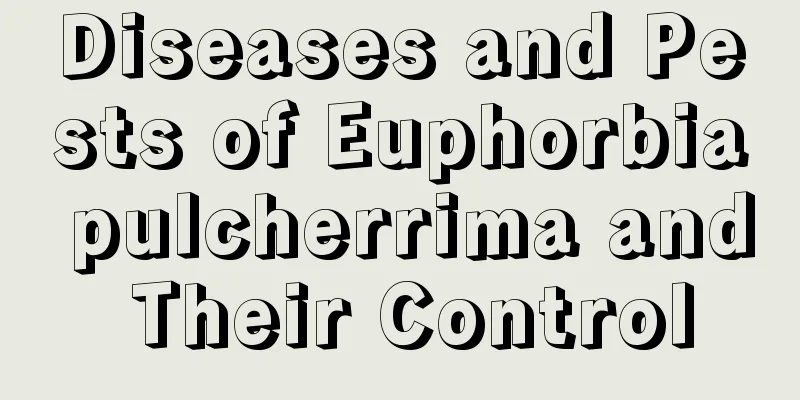Diseases and Pests of Euphorbia pulcherrima and Their Control

Physiological diseases of Euphorbia pulcherrimaFirst: No floweringAlthough the modified stems grow very luxuriantly, they do not bloom. This is caused by the physiological condition of the plant. If there is not enough sunlight and too much nitrogen fertilizer is applied, it will easily cause the leaves to grow too long, which is not conducive to the differentiation of flower buds. In addition, too much watering will prevent the full utilization of carbohydrates, which will cause the germination growth to stagnate. Second: Abnormal stem yellowingIf the abnormal stem turns yellow, it may develop into chlorosis or even burn the skin in severe cases. This is often caused by the incorrect placement of the flower pot, which is exposed to direct sunlight. Prevention and treatment methodsIn spring and autumn, be sure to place it outdoors in a sunny place for maintenance; In the hot summer, it should be placed in a well-ventilated, semi-shaded place to facilitate growth. In summer, you can also keep it in a place with scattered light indoors, but be sure to open the windows frequently for ventilation to help the plant breathe smoothly. We should also pay attention to preventing and controlling the damage caused by pests and diseases such as red spider mites and scale insects. Diseases and pests of Euphorbia pulcherrimaEuphorbia pulex often suffers from stem rot, brown spot disease and root-knot nematodes, all of which can cause damage to the plants, so timely prevention and control are necessary. Prevention and treatment methods For the damage caused by pests and diseases, you can directly spray with 1000 times diluted 50% carbendazim wettable powder; Root-knot nematodes can be controlled by watering with 1000 times diluted 80% dibromochloropropane emulsifiable concentrate. If ventilation is poor, it is more likely to be harmed by aphids, scale insects and red spiders. At this time, you can spray them with 1000 times diluted 50% carbofuran emulsifiable concentrate. |
>>: Diseases and Pests of Begonia and Their Control
Recommend
How to grow jasmine
Jasmine Growing Conditions Jasmine likes a warm e...
How to plant Dendrobium officinale in pots
1. Prepare the flower pot When planting in potted...
How do tulips survive the winter?
Tulips have high ornamental value and are relativ...
How to grow peach eggs
Growth habits of peach egg The peach egg is a suc...
What is rice?
What kind of crop is rice? Rice is a food crop an...
How many years does it take for Jade Tree to bloom (Flowering conditions and maintenance methods of Jade Tree potted plants)
How to care for jade tree so that it can bloom If...
Air pineapple cultivation methods and precautions
As long as the environment is suitable, it is not...
These 10 kinds of succulents can be sold at incredible prices. Why not check to see if your succulents are among them?
Top 10. Silver Crown Jade Silver Crown Jade belon...
How to cultivate coral grass in pots
soil When planting, you can choose some special c...
What are the cultivation methods and precautions of water bamboo?
Water Bamboo Introduction Water bamboo, also know...
When is the right time to sow lettuce?
Lettuce sowing time Lettuce is a biennial herb. T...
How to Graft Christmas Cacti
1. Time of grafting The time for grafting can be ...
How to propagate new bulbs of hyacinth
1. Bulb division propagation 1. Prepare bulbs: Th...
How to dry wolfberries and how to store them without getting damp
1. How to dry 1. Ordinary drying: Steam the fresh...
What to do if the leaves of Jade Butterfly are cracked
reason Jade butterflies are easy to raise, have s...









